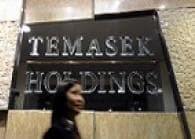
SINGAPORE (Feb 6): Singapore’s Temasek Holdings has told Standard & Poor’s in 29 pages why it shouldn’t mess with the state-owned investor’s AAA rating.
Temasek, which managed S$223 billion of assets as of last March, said the rating firm’s proposed new rules for grading investment holding companies lump Singapore with riskier nations such as Greece and Jamaica, according to a Feb 2 response to the changes.
S&P’s new criteria take into account the firms’ lack of direct ownership of assets, the challenges they face when selling in illiquid markets and volatility of assets they hold.
Part of S&P’s proposal groups Singapore, which has had a AAA rating for 20 years, alongside Greece, a nation that may run out of cash this month.
While Temasek would probably still enjoy the government’s top-grade overall rating, a weaker risk profile would be unwelcome at the company which has been considering offering bonds to individuals in Singapore.
“A triple-A credit rating is a rare thing in today’s markets, and there is a prestige element to it,” Veljko Fotak, assistant professor of finance and managerial economics at the University at Buffalo, New York, said in a Feb 5 e-mail.
“Any chink in that armour, even if only in the stand-alone, rather than overall, rating, could have image consequences.”
Temasek dollar bonds due in 2019 yielded 39 basis points more than US Treasuries yesterday and its credit-default swaps were at 38.7, compared with 35.5 for Australia.
Four baskets
S&P published in November proposed new criteria for assessing credit risk at investment holding companies (IHCs), defined as firms holding equity stakes across at least three sectors.
The ratings company asked for feedback from affected parties by Jan 30.
The new framework grades IHCs’ asset liquidity by splitting their main countries of operation into four baskets, based on a 30-year history of those nations’ share market swings, according to Temasek.
Singapore falls into the third basket with markets including Hong Kong, Saudi Arabia and Cyprus.
The measure should instead “be assessed based on the number of days needed to divest assets” on those exchanges, said Temasek.
“With its statement, Temasek is indirectly defending the standing of Singapore as a financial centre,” Sven Behrendt, managing director at Geneva-based GeoEconomica, which researches sovereign wealth funds, said in a Feb 4 phone interview.
“It’s understandable to me that Temasek doesn’t want the country to be put in the same category as Greece, Jamaica and Trinidad and Tobago.”
Asia, America
Temasek had 31 percent of its assets in Singapore as of March 31, according to its last annual report published in July.
Investments in the rest of Asia stood at 41 percent and those in North America, Europe, Australia and New Zealand at 24 percent.
About 70 percent of its assets were listed.
The firm’s biggest holdings include a 52 percent stake in Singapore Telecommunications, valued at US$25 billion, data compiled by Bloomberg show.
It owns a 6 percent stake in China Construction Bank Corp, worth US$11.6 billion, and 29 percent of DBS Group Holdings, valued at US$10.4 billion.
“S&P regularly requests comments from market participants on proposed changes to its methodologies and assumptions,” Bertrand Jabouley, the Singapore-based S&P analyst who follows Temasek, said in a Feb 5 e-mail.
“The objective of this proposed criteria is to help the market better understand key risk drivers for investment holding companies, enhance global comparability of our ratings and improve transparency.”
Stephen Forshaw, a spokesman for Temasek, declined to comment beyond the company’s statement when contacted by e-mail.
Riskier basket
Under the criteria, S&P also assumes that firms such as Temasek operate in a “moderately high risk” industry.
That puts IHCs in a basket riskier than pharmaceutical and oil and gas companies, said Temasek.
S&P has downgraded 18 energy firms this year in North America as lower oil prices curb their cash flows and ability to pay debt, data compiled by Bloomberg show.
The proposed industry classification could see a capping of IHCs’ so-called anchor ratings, which help determine stand-alone scores, at levels that don’t reflect the individual firms’ ability to pay debt, according to Temasek.
“In our view, classifying IHCs as a uniform, homogeneous industry is not meaningful,” Temasek said in the statement.
“A company should be assessed objectively, based on its individual credit quality, without being constrained by any cap.”
S&P assigns an “extremely high likelihood of extraordinary government support” to Temasek, which means the investment firm’s corporate score would reflect Singapore’s AAA rating even if its stand-alone grade dropped.
Surprise easing
The city’s economy grew an annualized 1.6 percent in the three months to Dec 31 from the previous quarter, less than analysts estimated, after its manufacturing industry weakened with slowing growth in China.
The country unexpectedly eased monetary policy last month, allowing the Singapore dollar to drop 1.7 percent versus the greenback this year.
Temasek said in January 2014 it was looking at ways to offer bonds to individual investors in Singapore.
Issuing fixed-income products will provide an “alternative investment opportunity” for investors seeking stable returns with lower risks, the company said in a statement that month.
S&P’s proposed new criteria for IHCs “is part of a bigger focus on how to evaluate liquidity risk as it has been deteriorating across the world,” Jean-Charles Sambor, Singapore-based Asia Pacific director of the Institute of International Finance, said by phone on Feb 4.
“It’s healthy that rating companies and firms such as Temasek are having a public discussion about these issues.”